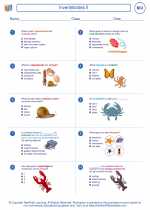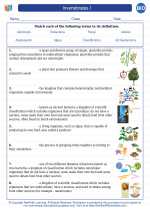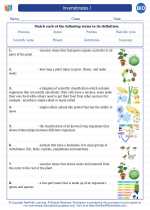Hydrological Cycle
The hydrological cycle, also known as the water cycle, is the continuous movement of water on, above, and below the surface of the Earth. It involves the processes of evaporation, condensation, precipitation, and runoff.
Processes of the Hydrological Cycle
- Evaporation: The process by which water is converted from its liquid state to a gaseous state, primarily from the surface of water bodies.
- Condensation: The process by which water vapor in the air is changed into liquid water, forming clouds.
- Precipitation: The release of water, in liquid or solid form, from the atmosphere to the Earth's surface, including rain, snow, sleet, and hail.
- Runoff: The flow of water over the land surface into bodies of water, such as rivers, lakes, and oceans, after precipitation.
Importance of the Hydrological Cycle
The hydrological cycle is vital for the distribution of water across the Earth's surface, providing freshwater for plants, animals, and human populations. It also plays a crucial role in regulating the Earth's temperature and climate.
Human Impact on the Hydrological Cycle
Human activities, such as deforestation, urbanization, and pollution, can significantly impact the hydrological cycle, leading to changes in precipitation patterns, water quality, and availability of freshwater resources.
Study Guide
Here are some key points to focus on when studying the hydrological cycle:
- Understand each process of the hydrological cycle and their interconnections.
- Learn about the factors that influence evaporation, condensation, and precipitation, such as temperature, humidity, and air pressure.
- Explore the impact of human activities on the hydrological cycle and the environment.
- Review the importance of the hydrological cycle for ecosystems and human societies.
◂Biology Worksheets and Study Guides High School. Invertebrates
Worksheet/Answer key Invertebrates I
Invertebrates I  Worksheet/Answer key
Worksheet/Answer key Invertebrates II
Invertebrates II  Worksheet/Answer key
Worksheet/Answer key Invertebrates I
Invertebrates I  Worksheet/Answer key
Worksheet/Answer key Invertebrates II
Invertebrates II  Worksheet/Answer key
Worksheet/Answer key Invertebrates I
Invertebrates I  Worksheet/Answer key
Worksheet/Answer key Invertebrates II
Invertebrates II  Vocabulary/Answer key
Vocabulary/Answer key Invertebrates I
Invertebrates I  Vocabulary/Answer key
Vocabulary/Answer key Invertebrates I
Invertebrates I  Vocabulary/Answer key
Vocabulary/Answer key Invertebrates I
Invertebrates I 

 Worksheet/Answer key
Worksheet/Answer key
 Worksheet/Answer key
Worksheet/Answer key
 Worksheet/Answer key
Worksheet/Answer key
 Worksheet/Answer key
Worksheet/Answer key
 Worksheet/Answer key
Worksheet/Answer key
 Vocabulary/Answer key
Vocabulary/Answer key
 Vocabulary/Answer key
Vocabulary/Answer key
 Vocabulary/Answer key
Vocabulary/Answer key

The resources above cover the following skills:
Concepts of Life Science (SC1, SC2, SC3)
The student demonstrates an understanding of the structure, function, behavior, development, life cycles, and diversity of living organisms by describing the structure-function relationship